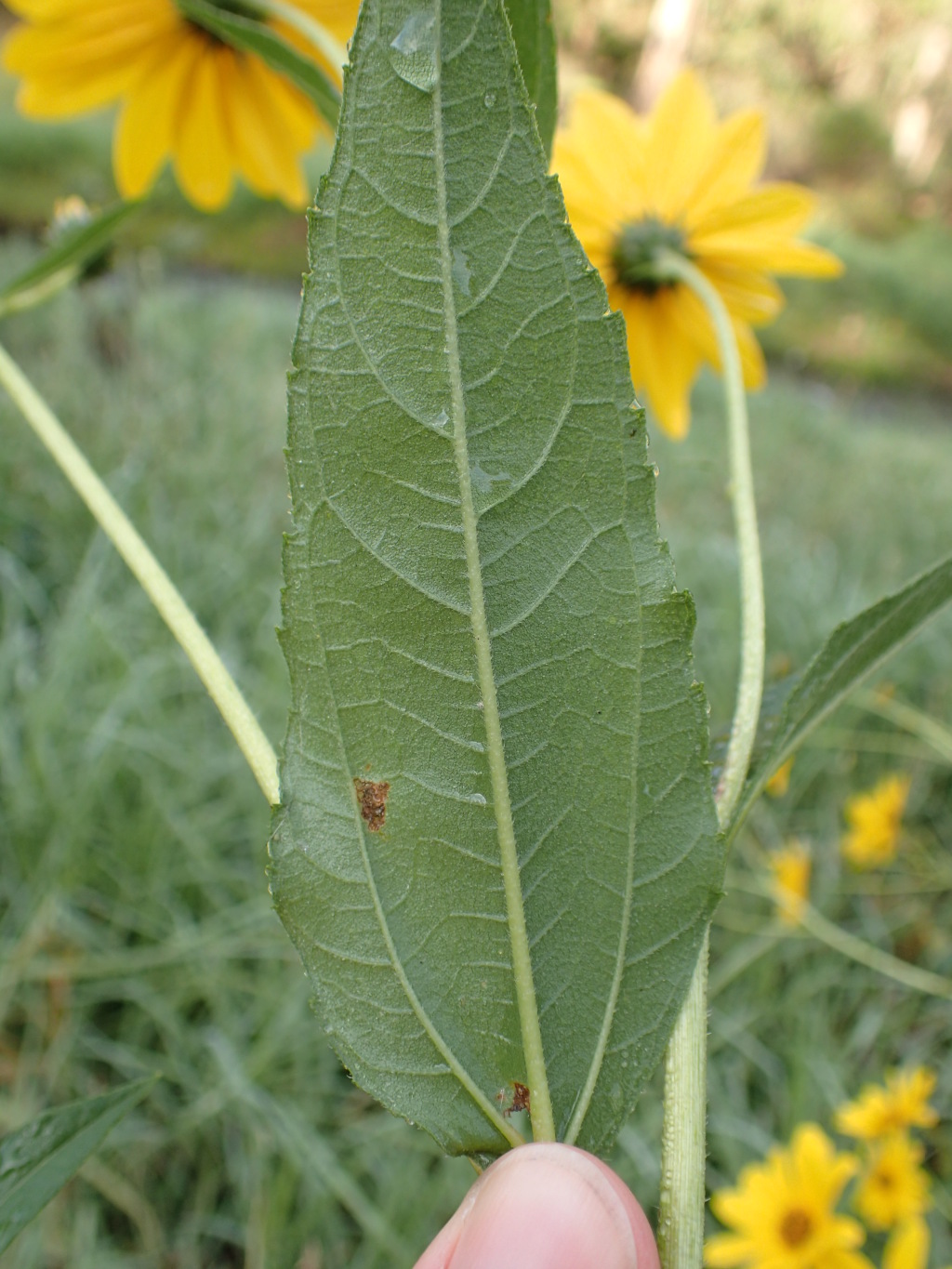Helianthus tuberosus
L. Jerusaluem ArtichokeErect perennial herb to 3 m high, annually dying down to rootstock (and often abundant) lumpy tubers to c. 10 cm long, 6 cm diam. Leaves mostly opposite, ovate to lancolate, 5–15 (–20) cm long, 3–10(–15) cm wide, apex acute to acuminate, base tapered sometimes abruptly, margins toothed, surfaces scabrous, major veins hispid on lower surface; petiole 2–7 cm long. Inflorescence of several to many capitula, each pedunculate from uppermost leaf axils, 3.5–8 cm diam., erect; involucral bracts c. 3-seriate, linear to lanceolate, 10–15 mm long, acute to acuminate, hirsute, margins ciliate; receptacle scales 3-awned, 8–9 mm long, papery. Ray florets 10–25, ligules (15–)20–40 mm long, yellow; disc florets numerous (>50), yellow, but anthers blackish. Cypselas obovate to cuneate in outline, 4–7 mm long, 4-angled, dark grey, glabrous or pubescent toward apex; pappus of 2 awned scales to c. 3 mm long, with our without up to 3 awnless scales to 1 mm long, early caducous. Flowers mostly Nov.–Feb.
VVP, GipP. Also naturalised WA, SA, NSW. Native to North America. Likely to persist with dumped garden refuse, but also sparingly established in some areas. Noted in Victoria from Melbourne suburbs Clifton Hill, Coburg, Footscray and Wantirna.
Widely cultivated for its edible tubers.
The name 'Jerusalem Artichoke' is a corruption of the Italian word for Sunflower, 'girasole' (from girare - to turn + sole - sun), rather than a reference to any occurrence in the Middle East.
 Spinning
Spinning




